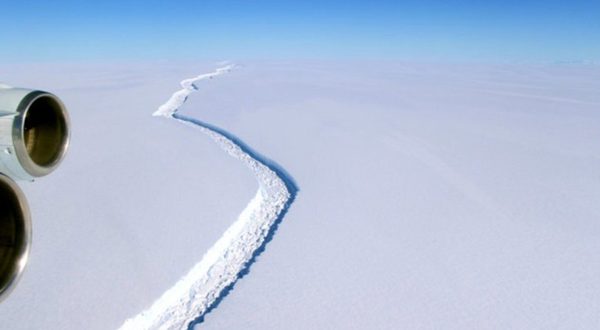An iceberg the size of Delaware could break off Antarctica in a matter of hours or weeks, researchers with the British Project MIDAS wrote in its latest blog.
Researchers monitoring the ice shelf report that from June 24 to June 27, the outer end of the iceberg started to accelerate to the fastest speeds ever recorded at this location — a development they say is a “notable departure from previous observations.”
As of May 31, the crack itself had just about eight miles to go before the iceberg would break free. The crack has not lengthened in the past month, so the ice is still attached. But that ice has suddenly started to move far faster than it ever has: more than 30 feet per day.
Scientists can’t say when the rift will cause the ice to break off the shelf, but when it does calve, that will remove 10% of the Larsen C shelf. The 2,000-square-mile iceberg would then become the third largest in recorded history.
The increase in the iceberg’s movement speed is “another sign that the iceberg calving is imminent,” scientists from Swansea University in the UK wrote on the website for Project MIDAS, which is tracking the rift.
The scientists also warn that the break could destabilize the entire 19,300-square-mile shelf and eventually cause it to disintegrate. This happened with the Larsen B ice shelf after a similar iceberg calved from there in 2002.
The Sentinel-1 satellite image data below illustrates the substantial change in ice speed from early June to late June.
The Project MIDAS team said on June 24 that the rift has been widening about 6 feet per day since the end of May, but there has been no observable change in the length of the crack since then.
When the iceberg does break free and sail into the Southern Ocean, it should not contribute to sea level rise, since it’s already on the water. But if the full Larsen C ice shelf collapses, the land-based glaciers that it is holding back could have a significant impact on sea level.
Agencies/Canadajournal
 Canada Journal – News of the World Articles and videos to bring you the biggest Canadian news stories from across the country every day
Canada Journal – News of the World Articles and videos to bring you the biggest Canadian news stories from across the country every day



